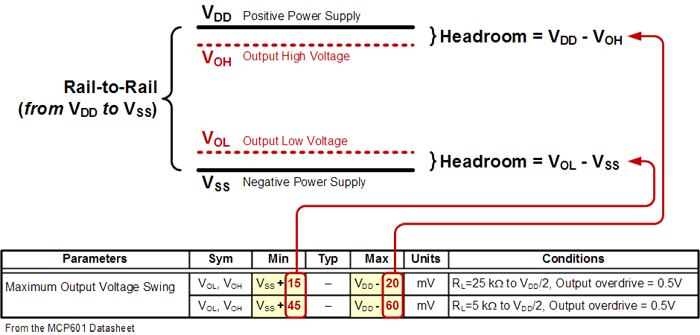Output Voltage Swing (VOH, VOL)
Output Voltage Swing defines how close the op-amp output can be driven rail to rail (either power rail: VDD or VSS) under defined operating conditions where the op-amp can still function correctly.
The key to comparing voltage output swing specifications is to determine the amount of current that the amplifier is sinking or sourcing. The smaller the output short circuit current, the closer the amplifier will swing to the rail. The voltage output swing capability of an op-amp is dependent on the op-amp output stage design and the load current.
In the graph above, we can see the difference between the concepts of rail to rail, headroom, VOH, and VOL.
Application Challenge
The input voltage range restrictions are critical in op-amp circuit applications. In a closed-loop configuration, using a voltage beyond the input voltage range sometimes looks like an output limit problem, but in fact, is an input range problem.

